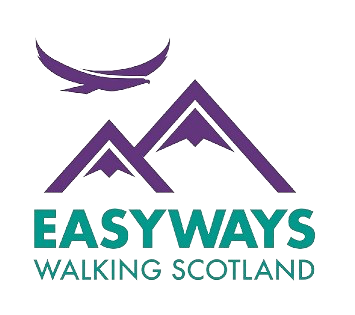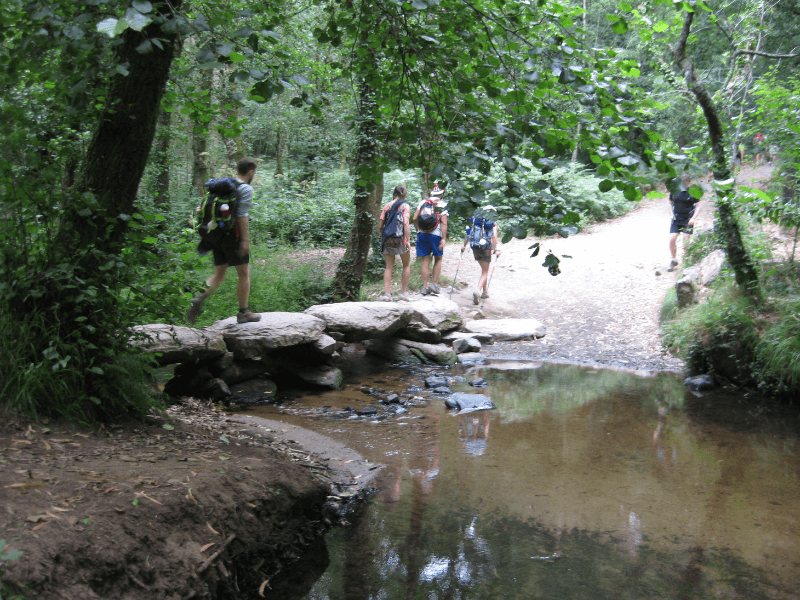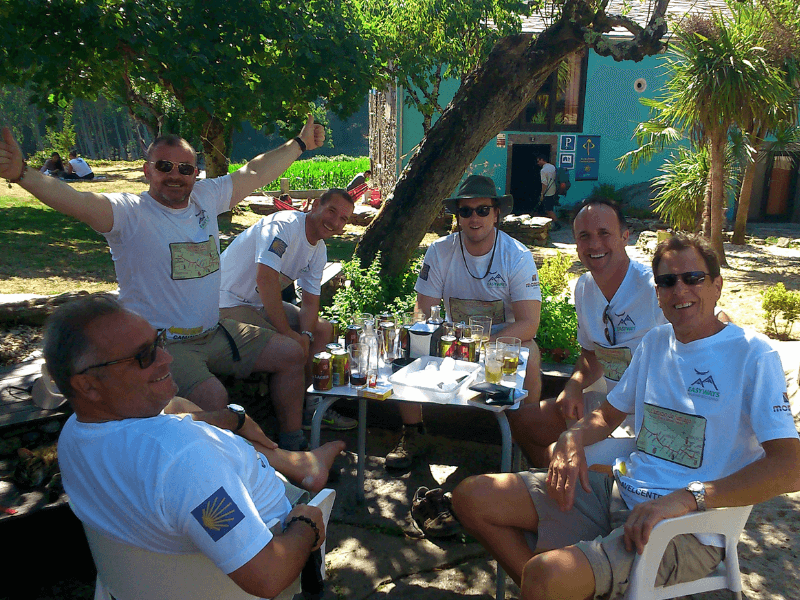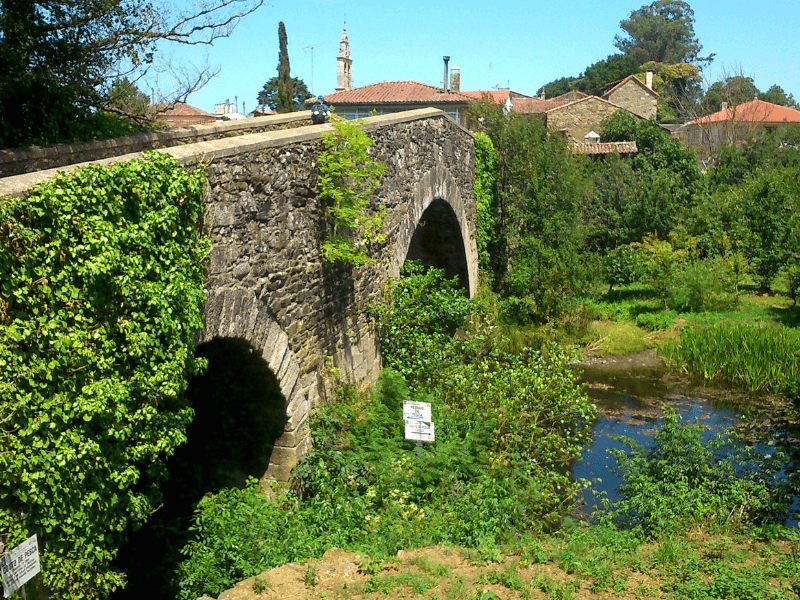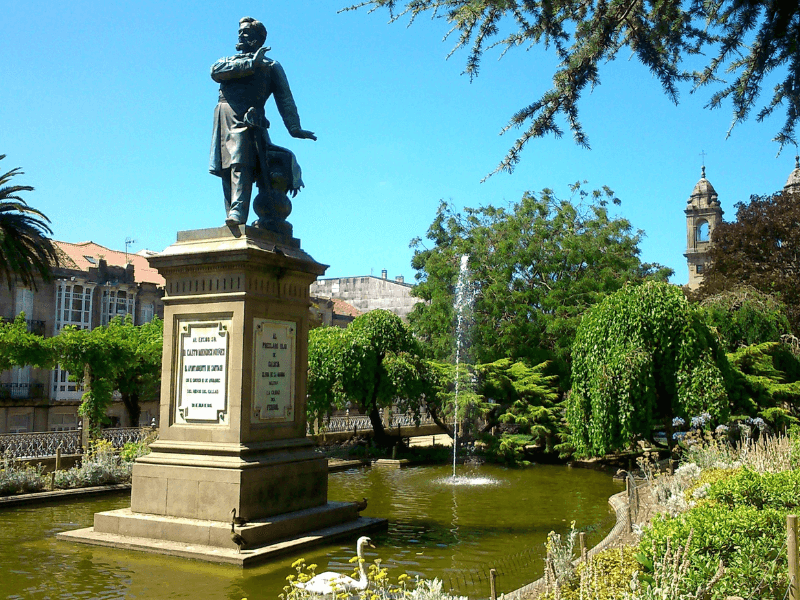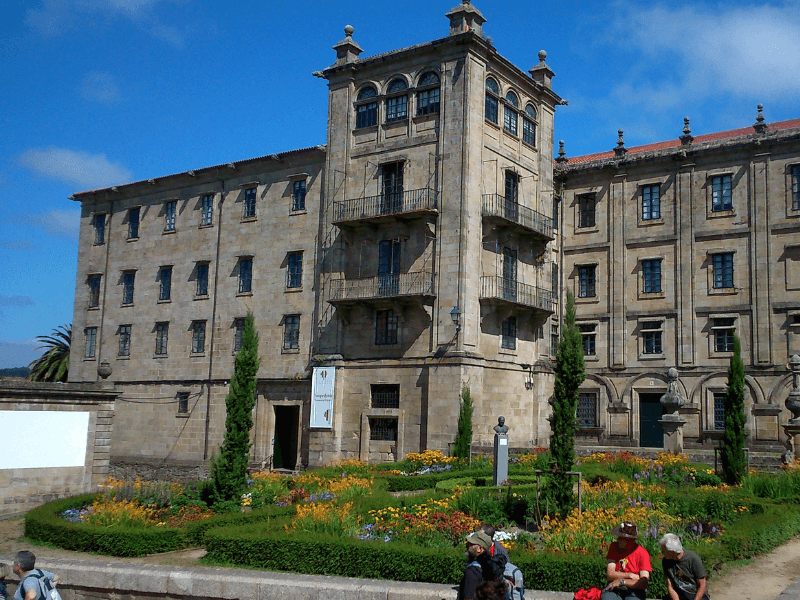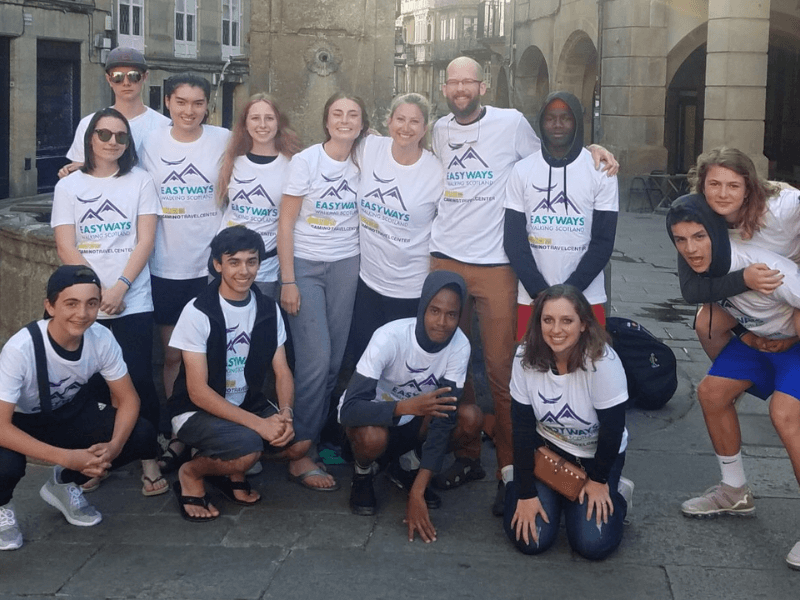
I have nothing but praise for the way EasyWays handled the organisation of our journey.
– Mike
Route Stops
Arrive Santiago Airport with private transfer to Sarria at the start of the route for your first overnight before commencing your walk after breakfast the following morning. Sarria is quite a modern town and a melting pot of new and old pilgrims – those who are about to finish and those who are just starting the shortest of the possible Caminos.
Expect a peaceful walk in shady oak woods, pretty villages and on quiet country roads. The village of Barbadelo has a beautiful Romanesque church that is worth a visit. The next significant village is Ferreiros. When you arrive in Portomarín you can chill out on one of the numerous terraces of the main plaza. Portomarín is located on the right bank of the River Minho. An access there looks like a stairway to heaven. The ancient Portomarín is submerged in a reservoir and the town was rebuilt on a safe hillside. The great fortress-church of St. Nicholas built in the XII century was dismantled stone by stone to be rebuilt in the centre of the new settlement.
From Portomarín the Camino crosses the river Minho and climbs steadily uphill before crossing Gonzar and passing the Romanesque Church of Santa María, Castromaior. The calm of the Galician Cemetery in Ligonde on a sunny day is welcome and in Eirexe, the Romanesque church is a beautiful stop for some rest. Palas de Rei was an important place in Middle Ages where the pilgrims used to gather for the last stages of the pilgrimage route together. The artistic richness of its area is considerable: a dozen Romanesque churches like Vilar de Donas, Castelo de Pambre or Pazo de Ulloa.
Today is an easy day underfoot, walking mostly in shade through a number of villages which have plenty of facilities for walkers. On arrival in Melide search for a type of restaurant called a “pulpería” to try the Galician speciality of Pulpo a Fiera (octopus coated in paprika).
Shortly after leaving Melide, you will walk through oak and eucalyptus forest with a wonderful smell and plenty of shade. Continue on the forest track, crossing several streams, to the village of Boente with its church of Santiago. Then the medieval village of Ribadiso, and finally Arzúa. In Arzúa do not forget to ask for a regional cheese – “queso” or “queixo”. Like Spanish wines, it has its certificate of origin: Arzúa-Ulloa.
This shaded section of the Camino will pass through woods, alongside streams and through sleepy villages. Take your time and visit the chapel of Santa Irena, with its unique statues of Santiago. The remainder of the way to Pedrouzo is on a good and quiet country road. The most important detail of this penultimate stage is the chapel dedicated to Saint Irene. The baroque fountain is famous for its healing waters.
The final stage includes Lavacolla where pilgrims traditionally washed in the river before reaching Santiago de Compostela. Tall eucalyptus trees line your way to Monte del Gozo From the “Mount of Joy” where you can see your destination – the Cathedral of Santiago! After a descent to the city you will be able to witness this World Heritage Site and marvel at the architecture and absorb the wonderful atmosphere of this cultural and spiritual mecca.
Congratulations – you have completed the Camino Frances! After breakfast, it is time to set off on your onward journey.
Walk the Camino Frances, part of the Camino de Santiago, or St James’ Way in English, to discover the pretty Galician countryside of North-West Spain.
St James’ Way can take numerous routes through Spain, some starting as far away as France or Portugal, all ending at the cathedral of Santiago de Compostela. The entire Camino Frances starts from Saint Jean Pied de Port in France, 800 km from Santiago, over the French border. EasyWays proposes starting from Sarria on the Camino Frances route for 6 days’ walking in rural Galicia through small villages, alongside river banks and eucalyptus forests, to end at the magnificent Cathedral City of Santiago de Compostela. According to tradition, St. James’ remains were carried by boat from Jerusalem to be buried in northern Spain, where the cathedral now stands.
The symbol of the Camino is a scalloped shell. There are a number of legends about the significance of the shell. It also served practical purposes for pilgrims who used the shell to scoop up water to drink. Today, you will see the shell on signposts to guide you on the way. Many walkers wear a shell to identify themselves with the Camino and it remains a popular souvenir of a memorable, and sometimes spiritual, walking tour.
A Compostela is a certificate of accomplishment given to pilgrims on completing a minimum of 100 km of the Way. Your official Pilgrim Passport be available to pick up at your first overnight hotel. On the Way, have your passport stamped with the official St. James stamp at least once a day in hotels, restaurants, bars or churches, to provide you with an authentic and original record of where you ate and slept on the route. On arrival in Santiago, you can then present your passport to receive your Compostela from the Pilgrim’s Office.
The Botafumeiro is the famous giant thurible or censer in Santiago de Compostela cathedral. The Botafumeiro is a 1.5 metre high receptacle containing coal and incense. During the church mass, it is tied to a rope hanging by the altar and set in motion with great precision, forming an impressive 65-metre long arched trajectory along the cathedral, a ritual which has been taking place at least since the 12th century.
If you want to see the Botafumeiro in use, the easiest way is to attend pilgrim mass in Santiago on a Friday evening at 7.30pm, so you should plan your walk to be in Santiago on a Friday. It is also used on special dates throughout the year such as Christmas Day and Saint James Day. Whenever St. James’s Day – 25th July – falls on a Sunday, the cathedral declares a Holy Year. Depending on leap years, Holy Years occur in 5, 6, and 11 year intervals. The next will be 2021.
The Camino Frances route is available from March until October.
Interested in our Camino Frances walk, fill in our enquiry form.
Quality Accommodation
Door to Door Baggage Transfer (max 20kg)
Rucksack Readers Guide Book
Location Details For Each Accommodation
Travel Information from start to finish
Sugguested Equipment List
Route Packages
What’s included?
- 7 nights’ accommodation for 2 people sharing in private inns with en-suite shower/wc
- Breakfast
- Door to door baggage transfer – maximum 18 kg per bag
- GPS Mapping App detailing full tour and accommodations
- Travel information to the start and from the finish of the walk
- Official Pilgrim Passport
- All local taxes
- Emergency support in Spain
What’s not included?
- Flights to and from Santiago Airport
- Private transfers to and from the airport on arrival and departure (EasyWays will be happy to arrange these if required)
- Evening meals, packed lunches and drinks
- Travel insurance
First established in 1996, EasyWays has built a strong reputation with the UK and International walking community in the delivery of walking tours throughout Scotland.
The template of every successful business is grounded in long term relationships, and EasyWays, along with our accommodation providers and baggage transfer companies work as one to ensure your walk experience is both enjoyable and memorable.
As a Scottish based company we are close at hand to the walking routes and pride ourselves in delivering a bespoke service – tell us what you would like and we will build an itinerary to match.
